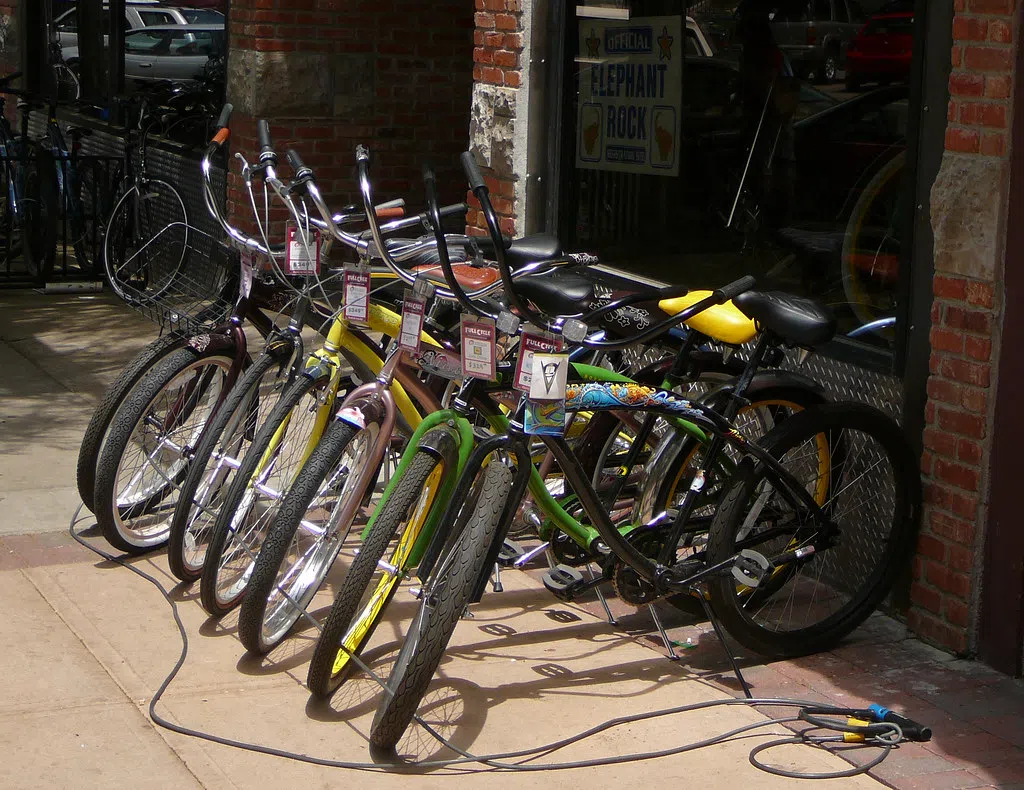Bike centric cities are cities that prioritize cycling infrastructure rather than putting cars first. They are designed in a way that keeps cyclists safe on the roads and ensures that all corners of the city are accessible for everyone, not just people who have a car. They usually have at least one road that has a protected bike lane, and some even contain car free routes altogether.
So where are these bike centric cities? Of course, there are the Amsterdams and the Copenhagens of the world. But according to London Bicycle Mayor, Shelley Carr, we don’t actually have to look too far to find examples of cities that are putting cyclists first.
“That’s why Google moved to Waterloo, because there are far, far, far ahead of us when it comes to bike infrastructure,” said Carr.
Cities like Waterloo and Guelph are utilizing certain infrastructure that protects cyclists and allows more people to access modes of transportation other than a personal car.
“Car ownership is a problem because most young people cannot afford a car,” said Carr. “They can barely afford their rent, let alone car insurance.”
Carr doesn’t believe London is where it needs to be just yet in terms of reaching its cycling goals.
“No, I don’t think we’re close to it,” she saoid. “I think we’re heading in the right direction. The number one thing that we’ve done in cities that we’ve asked for and are waiting for an active transportation engineer to be hired, which will work with the transportation department to start creating infrastructure that is more cyclists and pedestrian friendly.”
While things might have a long way to go, owner of the London Bicycle Cafe, Ben Cowie said that recent discussions with the city’s Cycling Advisory Committee looked promising.
“We were talking about bike safety in a couple places in the city,” he said. “So Dundas Place being one of them. And in the East End, near Bridges Street which is slated to get some like upgrades in the next little bit. The Dundas Place issue has come up a few times now where we’ve been unable to create something that’s safe for cycling.”
Cowie admitted change is often slow in London when it comes to cycling.
“There’s no courage and no leadership,” said Cowie. “We’ve declared a climate emergency. We’ve said that this is a big problem. We know that transportation due to gasoline burning cars is our number one source of carbon emissions. And we’re not willing to make it more difficult for anybody to drive anywhere.”
Those who oppose cycling infrastructure usually cite budget concerns. But Cowie says the changes needed here in London are not extreme.
“Cycling safety is kind of just repetitive,” he said. “It’s just, you have to dedicate space on the road and separate it from cars with curbs. There isn’t really a whole lot else to it. It’s not rocket science, it’s actually really cheap to do.”
So why even prioritize becoming a cycling city? Carr said cities that focus on cycling infrastructure are usually healthier, happier communities.
“You saw that in Toronto just on a temporary basis where they shut down Lakeshore for the summer on the weekends,” she said. “And all of a sudden everyone was out riding a Lakeshore. And it was such a success that 92 per cent of Torontonians want Lakeshore to be closed down to cars on the weekend again, and they want that program to proceed passed COVID-19.”
Cowie agreed, adding that prioritizing cycling should be central to the city addressing its climate emergency.
“We’re in the midst of the greatest emergency any of us will ever see,” he said. “And I think that we need urgent action on building cycling facilities to get people out of their cars.”
Shifting mindsets to becoming a more bike-centric city will take a lot of work. London may be a long way from achieving its long term climate goals. But people like Carr and Cowie are spearheading the changes and getting the support of the City behind them.






